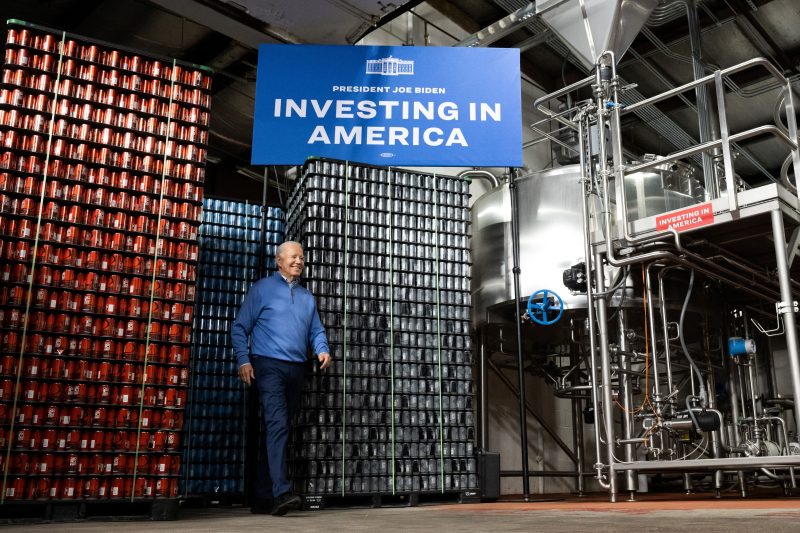
Biden wooing battleground states and red states with research funds
Biden administration officials on Monday announced $150 million in research funding for 18 states, most of which are contested or red, as part of a raft of policies to boost the nation’s manufacturing industries ahead of the election.
The battleground states of Arizona, Nevada, North Carolina and Wisconsin are among the places receiving funding to set up “innovation engines” for industries ranging from aerospace to textiles to energy under a new program overseen by the National Science Foundation.
Other states receiving the funding are Florida, Louisiana, North Dakota, Ohio, South Carolina, Tennessee, Texas, Utah and Wyoming, all of which Donald Trump won in 2020. Five states that Biden won also received funding: Colorado, Illinois, New Mexico, New York and Virginia.
President Biden’s top economic adviser, Lael Brainard, director of the National Economic Council, told reporters that the program was an “integral” part of the president’s plan to support innovation “in regions that were left out of the recent decades’ technology boom.”
Biden’s investment push for U.S. manufacturing — dubbed “Investing in America” — may bolster his stance against Trump, who touts his trade war against China as a key accomplishment of his presidency. The Biden administration is also in the process of rolling out a whopping $52 billion in subsidies to U.S. semiconductor factories and research facilities across the country to ensure the United States retains leadership in next-generation technologies against China.
The Washington Post reported last week that Trump is weighing options for a renewed economic attack on China if reelected.
It remains to be seen whether the tech investments will resonate with voters, compared with hot-button topics like immigration and abortion. While the economy has always been a top issue for voters, it can take years or even decades to know if scientific research is a success or failure.
Biden administration officials have been touting the investments as a way to broaden the benefits of the technology sector beyond Silicon Valley.
“For far too many regions across the country, research and technology advances didn’t take root and blossom into economic growth,” said Arati Prabhakar, director of the White House Office of Science and Technology Policy. “To tackle the great challenges of our times, we have to be able to tap talent to spur growth more broadly.”
Monday’s announcement included centers to study aerospace in Texas and New Mexico; semiconductors in central Florida; agriculture technology in North Dakota; energy storage in New York; climate resilience in Colorado and Wyoming; and water in Illinois, Ohio and Wisconsin.
The National Science Foundation described the centers as “one of the single largest broad investments in place-based research and development in the nation’s history,” saying total investment might reach $1.6 billion over the next decade.
In a show of support for the program, first lady Jill Biden on Friday visited Forsyth Technical Community College in Winston-Salem, N.C., which will receive funds to study regenerative medicine.
The new research centers and $52 billion in manufacturing subsidies for semiconductors — colloquially called “chips” — were funded by the Chips and Science Act of 2022. The Biden administration has so far announced relatively small grants for chips plants in New Hampshire, Colorado and Oregon, with larger factory projects expected to be unveiled in coming weeks.
Despite fears of a recession, the U.S. economy appears to have achieved a soft landing and has outperformed those of its major trading partners. Data released Friday showed annual inflation over the second half of 2023 fell to the Federal Reserve’s 2 percent target, with economic growth of 3.1 percent over the past year.
